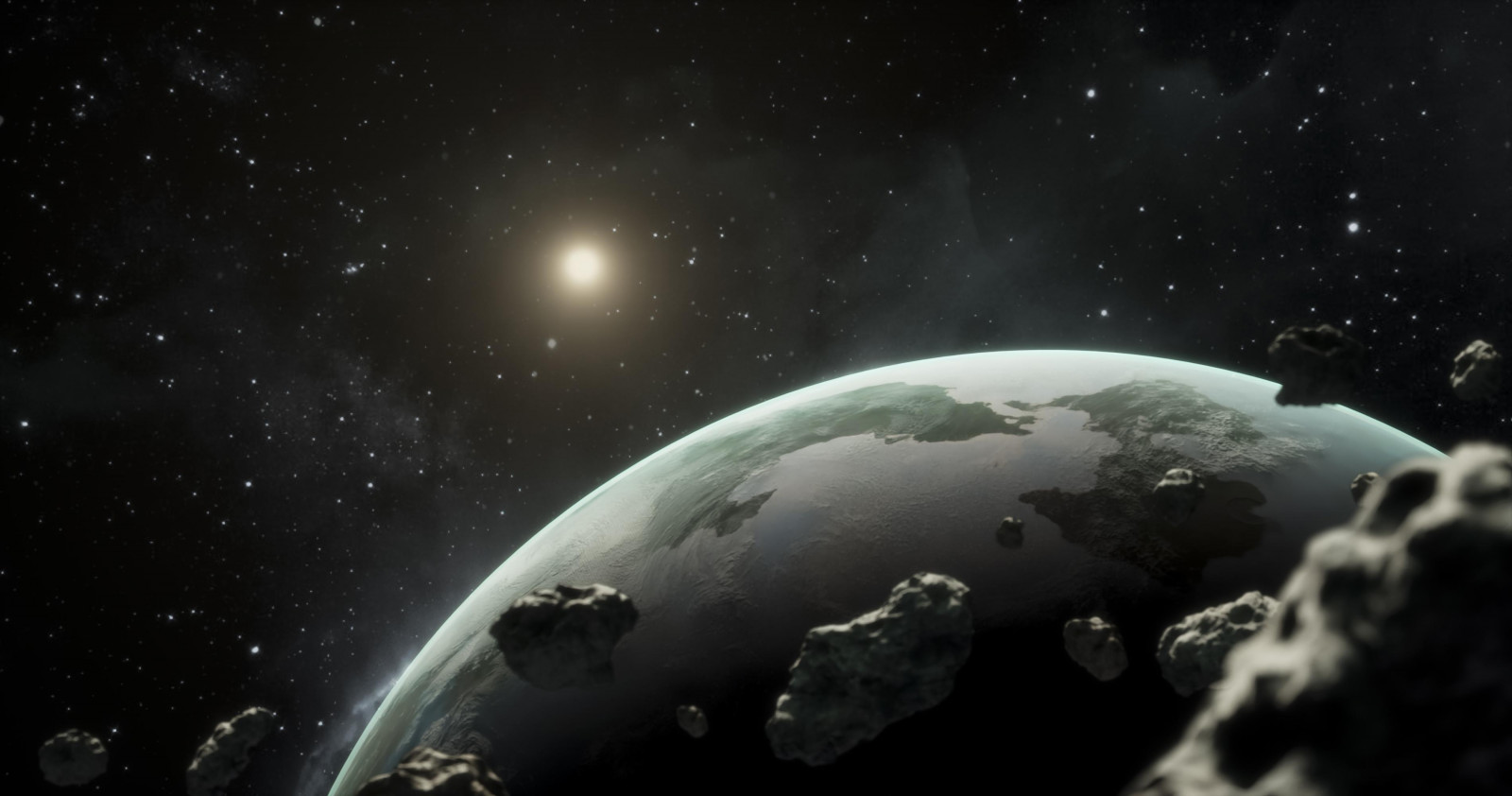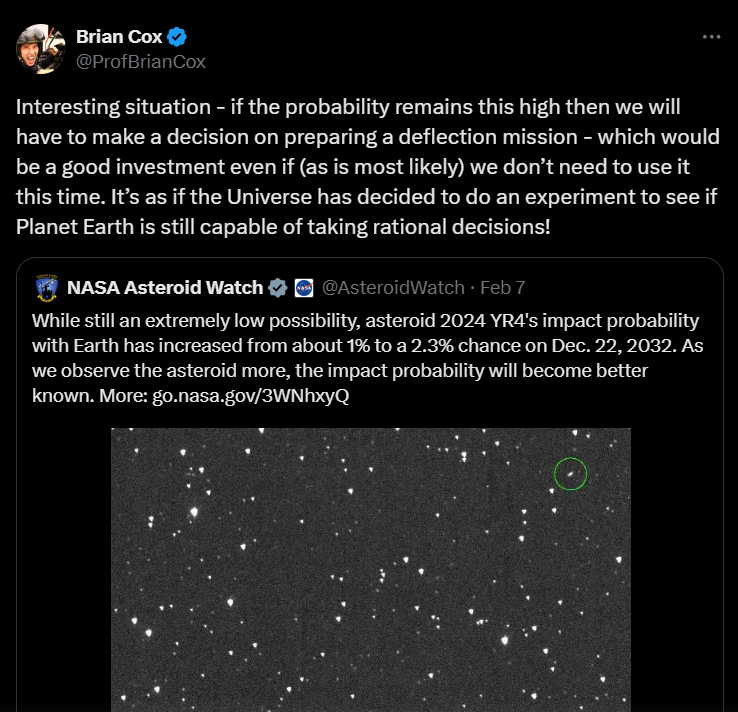What We Know About the Asteroid That Might Hit Earth in 2032

© Freepik
In December 2024, astronomers detected a new asteroid, named 2024 YR4, which has since captured the attention of space agencies worldwide. But why did this have sparked both curiosity and concern? Is there a possibility for this asteroid to hit Earth? Here’s what we know so far about 2024 YR4 and how experts are tracking its path.
What Is Asteroid 2024 YR4?
Asteroid 2024 YR4 is a near-Earth object (NEO) estimated to be between 40 and 90 meters (130 to 300 feet) in diameter—roughly the size of a football field. Discovered by a telescope in Chile, this space rock is part of the millions of asteroids orbiting the Sun. It is a piece of the solar system’s formation 4.6 billion years ago. While most asteroids reside in the main asteroid belt between Mars and Jupiter, some, like 2024 YR4, are nudged into orbits that bring them closer to Earth.

Might This Asteroid Hit Earth?
As of early 2025, NASA and the European Space Agency (ESA) estimate a 2% chance that 2024 YR4 could collide with Earth on December 22, 2032. While this probability may seem alarming, scientists emphasize that it is still extremely low. In fact, as more data is collected, the likelihood of impact is expected to decrease, potentially dropping to zero.
The asteroid’s current trajectory suggests that if it were to hit Earth, the impact zone would span a narrow corridor stretching from the eastern Pacific Ocean, across northern South America, the Atlantic Ocean, Africa, the Arabian Sea, and South Asia. This path includes densely populated regions, raising concerns about potential localized damage.
How Scientists Are Tracking 2024 YR4
To better understand the asteroid’s orbit and size, astronomers are using some of the world’s most advanced telescopes. This includes NASA’s James Webb Space Telescope (JWST). The JWST’s infrared capabilities will help measure the asteroid’s heat emissions. It provides a more accurate estimate of its size and composition. This information is critical for predicting the potential consequences of an impact and determining whether deflection efforts might be necessary.
In March 2025, 2024 YR4 will make its first close approach to Earth. It will be passing within approximately 5 million miles (8 million kilometers). This will provide a valuable opportunity for scientists to gather additional data before the asteroid moves out of view, not to be seen again until 2028.
What Happens If 2024 YR4 Hits Earth?
While 2024 YR4 is not large enough to pose an existential threat to humanity, it could cause significant local damage. If the asteroid is on the smaller end of the size estimate (around 40 meters), its impact would likely result in an airburst similar to the Tunguska event of 1908, which flattened thousands of square miles of forest in Siberia. If it’s closer to 90 meters, the consequences could be more severe, potentially devastating a city or populated area.
The asteroid would strike Earth at a staggering speed of about 38,000 miles per hour (17 kilometers per second). This would cause it to release energy equivalent to several megatons of TNT. However, given that 70% of Earth’s surface is covered by water, the most likely scenario is that it would land in an ocean, causing minimal damage.

How Scientists Plan to Mitigate the Threat
If the risk of impact increases, space agencies have strategies in place to deflect or mitigate the threat. One proven method is the kinetic impactor technique, which involves slamming a spacecraft into the asteroid to alter its trajectory. NASA successfully tested this approach in 2022 with its Double Asteroid Redirection Test (DART) mission, which changed the orbit of a small asteroid named Dimorphos.
For 2024 YR4, a kinetic impactor could be deployed if necessary. However, scientists are also exploring other options, such as using nuclear devices to nudge the asteroid off course. These measures would only be considered if the asteroid’s trajectory confirms a high probability of impact.
Why This Asteroid Is Unusual
What makes 2024 YR4 particularly noteworthy is its size combined with its relatively high impact probability. Most asteroids of this size are detected long before they pose any threat, but 2024 YR4 was discovered just eight years before its potential impact date. This highlights the importance of continued vigilance in monitoring near-Earth objects.
The asteroid has been assigned a level 3 on the Torino Impact Hazard Scale, which rates the risk of celestial objects colliding with Earth. This is the first time since the discovery of asteroid Apophis in 2004 that an object has reached this level of concern.
What’s Next?
Over the coming months, astronomers will continue to refine their measures of 2024 YR4’s orbit and size. By April 2025, they expect to have enough data to either rule out the possibility of impact or confirm the need for further action. If the risk remains, scientists will have until 2028—when the asteroid becomes visible again—to finalize their plans.
In the meantime, space agencies are working together to ensure that all necessary precautions are taken. As Dr. Luca Conversi, manager of ESA’s Near-Earth Object Coordination Centre, explains, “The most likely outcome is that we will be able to demonstrate and prove that there is no impact risk. However, we are prepared for any scenario.”
A Wake-Up Call for Planetary Defense
The discovery of 2024 YR4 underscores the importance of investing in planetary defense systems. As telescopes and detection technologies improve, we are likely to identify more potentially unsafe asteroids in the future. While the risk of impact from 2024 YR4 is low, it serves as a reminder of the need to be prepared for the unexpected.
As astronomer Brian Cox aptly put it, “It’s as if the Universe has decided to do an experiment to see if Planet Earth is still capable of making rational decisions.” For now, scientists remain confident that asteroid 2024 YR4 will not hit Earth, but they are ready to act if the situation changes.

Stay tuned for updates as astronomers continue to track 2024 YR4 and work to ensure the safety of our planet.
You may also like: Ready To Be A Billionaire? NASA Mission ‘Psyche’ Can Do That!



